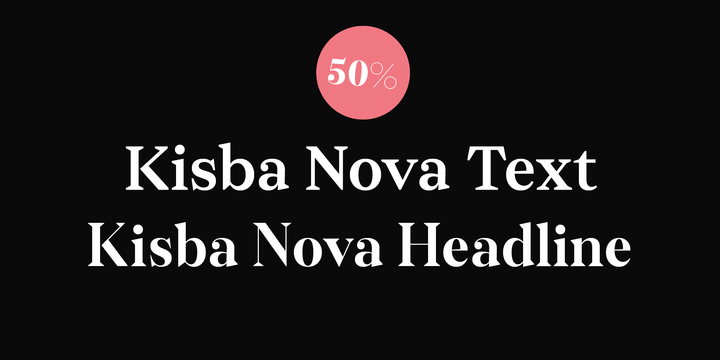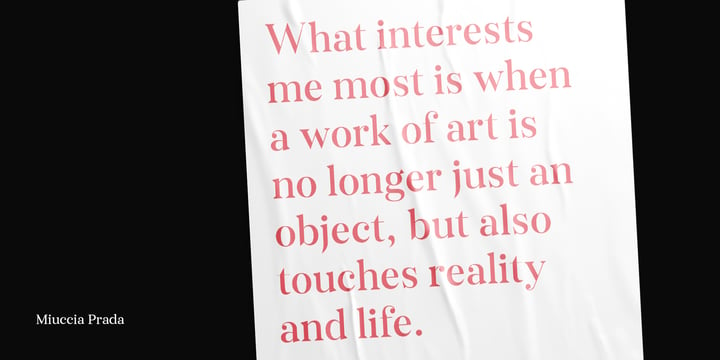
Kisba Nova – A character actor that turns heads. Spiky serifs, soft ball terminals.
All eyes on Kisba: enter a display typeface designed to arouse attention. Kisba is that one guest who joins a party, and a murmur goes through the crowd. Kisba is pure charisma.
Opposites attract: Kisba combines sharp wedge serifs and spiky spurs with round and soft ball terminals. Infuse this with a neoclassical stroke contrast and you get a thrilling typeface driven by visual extremes. Kisba’s extraordinarily designed, thin and monolinear diacritics, punctuation marks, and symbols add to this modern and elegant character.
Kisba is a diva, though, not a workhorse. With its flamboyant looks and extravagant letters like f, k, and x, this typeface is primarily intended for display use and short texts. In the showbiz, it’s all about excitement, not comfort, after all!
The entire font family consists of seven weights from Thin to Black, offering plenty of possibilities to set texts and headlines. With about 600 characters per weight, Kisba contains enough functionality for the demands of a skilled typographer. OpenType features, such as a large set of ligatures, extended language support, case-sensitive forms, different sets of figures, and arrows, enable sensational designs both in web & print layouts.
Kisba celebrates the dual nature of softness and sharpness in a single typeface. It’s a character actor that turns heads, guaranteed to leave a mark.

